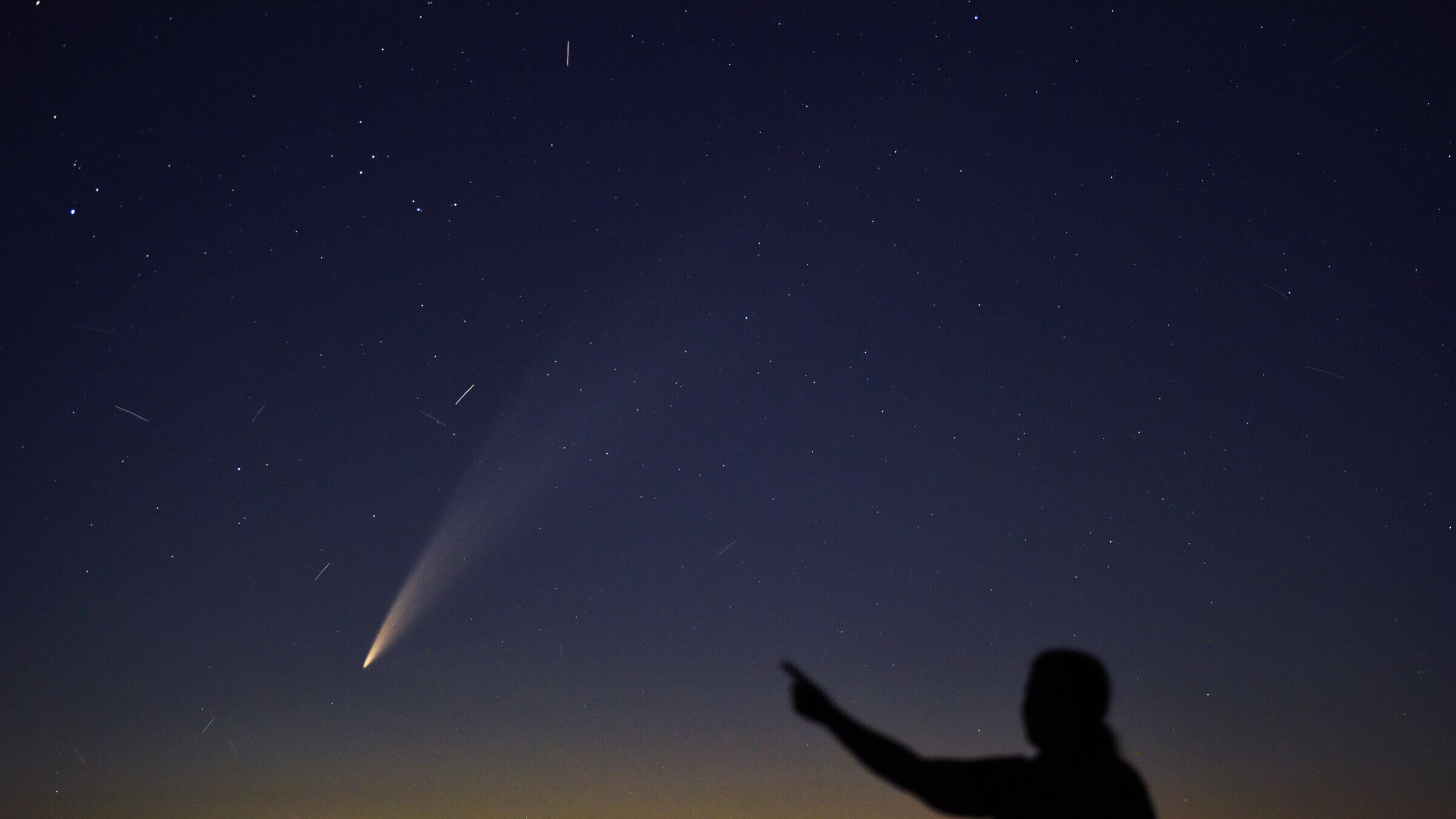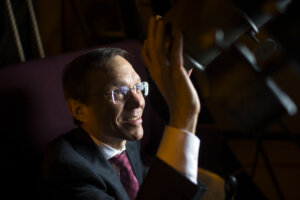A comet is streaking across our solar system — is it an omen for Jews?
Recent sightings of 3I/ATLAS have sparked discussions of Jewish hopes and fears about extraterrestrial life

A comet as seen earlier this year. Photo by Getty Images
A newly tracked interstellar comet, which has been dubbed 3I/ATLAS and is likely to pass the sun, Jupiter, Mars and Venus (but not Earth) this autumn, has sparked some unexpectedly Jewish reflections.
Avi Loeb, a Harvard professor of astronomy, has posited that comets and space debris might be products of extraterrestrial intelligence and has theorized that there is a 60% likelihood that 3I/ATLAS is an extraterrestrial construction. Loeb has also informed the Jewish Journal of Greater Boston that the Messiah may well be extraterrestrial in origin.
Elsewhere, Loeb has suggested that after the arrival of extraterrestrials on Earth, “old religions might die and new religions might be born,” implying the possible end of Judaism, as one of the old-time religions.
The professor has stated that he is “very proud” of Jewish tradition because “there’s a lot of wisdom in it,” which might be seen as a neat understatement. But at the same time, in a blog he has declared that because the Earth is no safe haven for Jews, it might be a good idea to move to outer space, where there are no lethal proprietary struggles of the Middle East type nor any antisemitism.
In any case, given the way the solar system is developing, within 7.6 billion years the sun will swell into a red giant and vaporize the Earth, astronomers tell us. To sidestep this fate, Loeb hints that Jews might kvell for trillions, instead of mere billions, of years by relocating to a distant planet, any one of untold numbers currently uninhabited.

This notion, although meant perhaps only half-seriously, overlooks the Jewish tradition of Earth as a potentially blessed place for Jews, however long the blessing lasts. The biblical Book of Isaiah uses the term “Beulah” (from the Hebrew word for married) to refer to the land of Israel after its restoration, a symbolic state of being in a blessed covenant with God on Earth, not in outer space.
At the same time, Loeb has cautioned that extraterrestrial visitors might have malign motives and earthlings would not be able to oppose them; on the other hand, ETs might also be nicer and better than humans. Last month, Loeb claimed that, since interstellar visitors “must have survived” for billions of years, they might follow the principle of “survival of the kindest.”
Justifying his assertion that roaming extraterrestrials seeking earthly contacts might be benevolent, Loeb stated: “Lonely people do not engage in blind dates if they believe that their dating partners are likely to be serial killers,” going on to observe that such interstellar wandering lonely hearts are “motivated to seek partners if they believe that kindness is abundant on the dating scene.”
Whatever the eHarmony aspect of intergalactic dating might be, the concept of visitors from outer space who are kind to Jews and others is contradicted by Loeb’s repeated claims that interstellar comets could also be espionage vehicles with menacing intent. These dire predictions have worried some readers, while annoying fellow astronomers who have called them mere distractions, implying that the time spent denying Loeb’s much-publicized, highly improbable theories might be better used for further research.
Still, Loeb is far from the first to associate Yiddishkeit with extraterrestrial phenomena — the tradition goes back at least as far as the vision of a chariot-like structure with four wheels described in the Bible’s Book of Ezekiel, symbolizing God’s omnipresence, omniscience and mobility.
The 17th-century cult leader Abraham Miguel Cardozo saw faces in the moon, including the False Messiah Sabbatai Zevi and the mystic Isaac Luria. More recently, the Jewish psychiatrist John Mack, also affiliated with Harvard, investigated unproven claims of alien abductions, including one made by an Israeli woman who, under hypnosis, recalled a former 13th-century life as an Arab merchant famed for justice and benevolence.
These and other examples have been examined by David Halperin, an expert on Jews and UFOs, who alludes to the eminent American Jewish astronomer Carl Sagan, who was open-minded about the possibility of extraterrestrial life, but concluded that as yet, no purported discoveries had been proven scientifically.
In a recent blog post, Loeb, who has previously likened his detractors to those who dismissed Galileo, Madame Curie and the Wright Brothers, compared himself to a Jewish child prisoner in Theresienstadt concentration camp who drew idealized images of a “better world” rather than the grim reality of a Nazi jail. Loeb noted that he and others who dream “of a better world than Earth” might “guide [humanity] to the promised land” by encountering aliens.
Whatever one thinks of these comparisons, Jews have long sought and found extraterrestrial inspiration in earthly phenomena, and the wisest scientific mavens, including Sagan and others, have remained temperate, whether or not such theories turned out to be factual. May the same turn out to be the case with 3I/ATLAS.
















